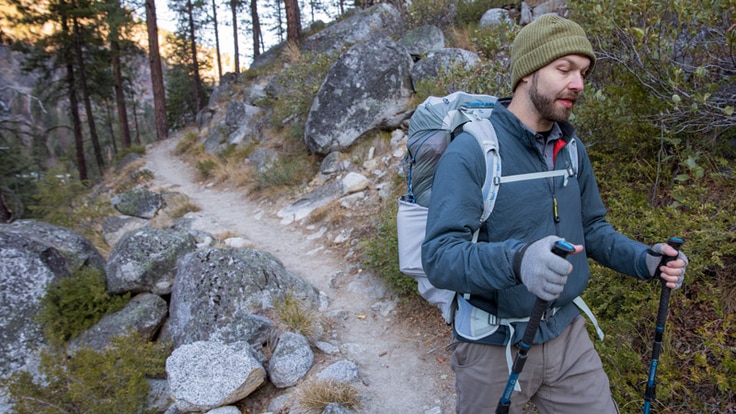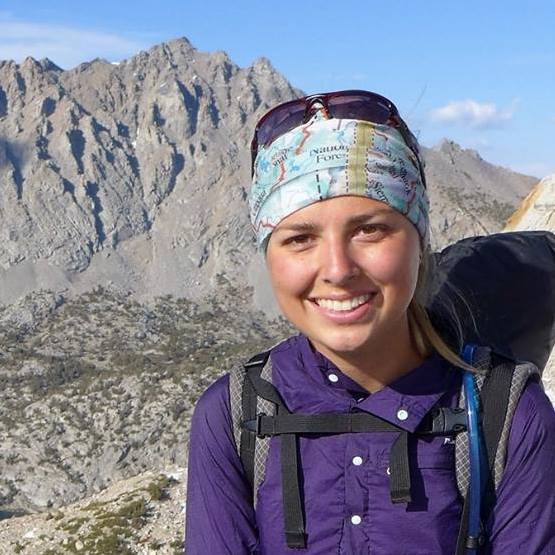Ultralight backpacking is more than just shaving ounces. It's about freeing yourself so you can hike farther and more comfortably, cover wider terrain and see more. Staying fast and light puts more within your reach and less strain on your back, shoulders and legs. It's about calculating the conditions you expect and being willing to experience edges of discomfort knowing that the tradeoff is huge—an adventure that is far from a trudge.
We'll help you get started as you build your fast and light backpacking kit. (A sales associate at your nearest REI store can help you get outfitted). Because the lightest gear can also be the most expensive, you can slowly add lighter gear, investing in equipment over time and as your budget allows. Finding used gear is also a great way to build your kit within a budget. However you do it, start with the "big three" items where you can cut the most weight—your shelter, sleep system and backpack.
- First, decide on your ultralight shelter. Shelter is generally the heaviest and likely the most expensive part of your ultralight kit. It'll impact the rest of your budget.
- Pick the sleep system you need. Do you want a sleeping bag or quilt, foam pad or air pad?
- Choose your backpack once you've figured out the other big-ticket items. The lighter and less bulky your gear, the smaller or less structured your pack needs to be.
- Find ways to cut weight from other gear essentials, such as cooking equipment and clothing.
Read more basic tips in our article Ultralight Backpacking Basics.
Take a Lightweight Backpacking Workshop
Base Weight for Ultralight Backpacking
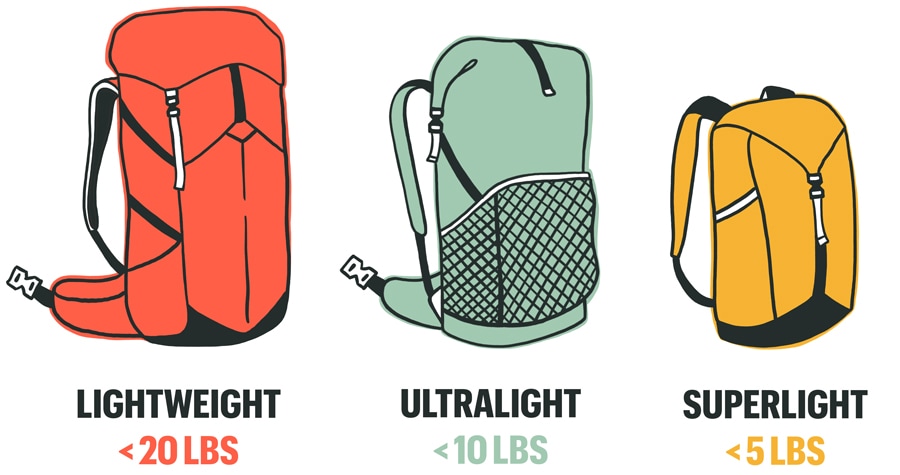
While there's no official definition, you're generally considered an ultralight backpacker if your base weight is under 10 pounds. Base weight is the total weight of your loaded pack, minus the "consumables" (food, water and fuel) that vary with trips and gets lighter as you eat, drink and cook. Your tent, sleeping bag, water filter, stove and clothing won't change much from trip to trip. You're generally considered a lightweight backpacker if your base weight is under 20 pounds and superlight backpacker if your base weight is under 5 pounds. A traditional backpacker typically has a base weight under 30 pounds.
Decide on Your Ultralight Shelter
If you're going solo, you'll generally want a shelter that's less than two pounds. For a two-person shelter, aim for less than three pounds. There are pros and cons to each of the shelter choices favored by minimalist backpackers. Ultimately, the decision will boil down to personal preferences and what suits you and your budget. Do you want a tent or an alternative such as a hammock, bivy or tarp? How many people will be sharing the shelter? Do you need bug protection? Do you want an enclosed setup? Do you want to be off the ground, or can you handle sleeping on the ground? If you haven't tried an alternative to a tent, such as a hammock tent, consider borrowing or renting one before committing in case you don't like it.
Tents
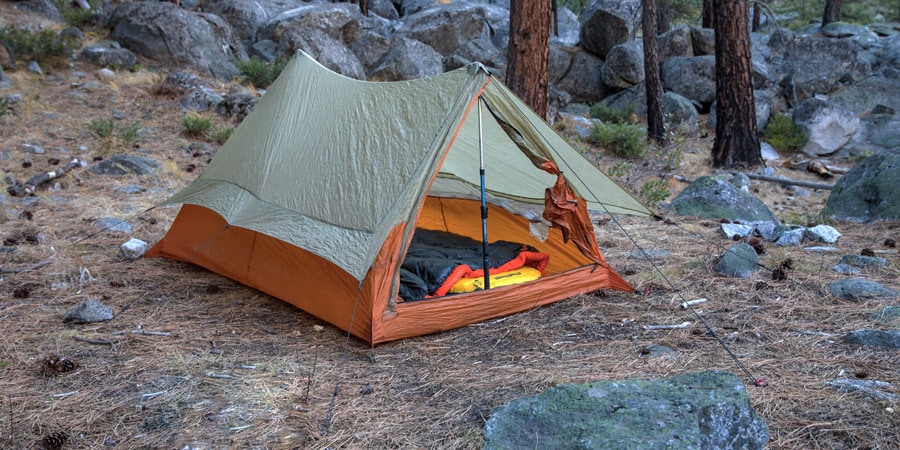
Traditional ultralight tents keep out the rain, wind, snow, bugs and other elements.
- These freestanding, enclosed shelters provide the most weather protection and are the most familiar to backpackers, so they're easy to set up.
- A light one-person tent may be the most expensive option among your choices. Sharing a tent cuts down on weight since you can split the gear—tent, poles and fly.
- Double-walled tents—which have an inner tent body and an outer rainfly—have more gear storage, better ventilation and prevent condensation. To save ounces, you may have to sacrifice some features including storage space, vestibule, multiple doors or other amenities.
- Single-walled tents offer the protection of a traditional tent but weigh much less and are quicker to pitch because they have a single layer of fabric. But they tend to be more expensive and condensation is more of an issue.
Tip: Leave the ground cover (or ground sheet) at home to save extra weight.
Tarp Shelters
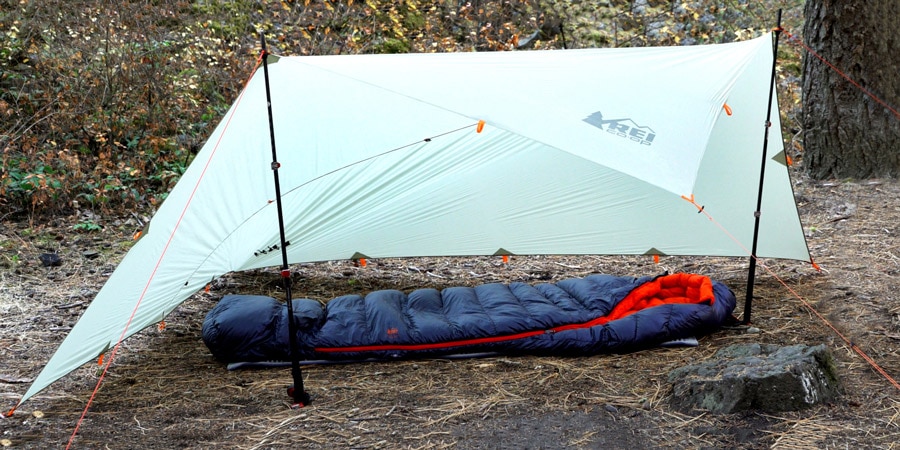
Tarp shelters are versatile, lightweight and affordable.
- Tarps shield you from rain and other elements but don't come with a floor or bug netting.
- It may take time and practice to set them up properly. But you can set it up in a variety of ways and adapt the configuration to a particular camp spot, location or weather condition.
- Many tarps cut out tent poles but require the support of trekking poles.
- Some popular tarp shelters are shaped like pyramids. They're supported by a center pole and you can often customize them by adding bug netting or a floor.
Read more about How to Set Up an Ultralight Tarp Shelter.
Hammocks
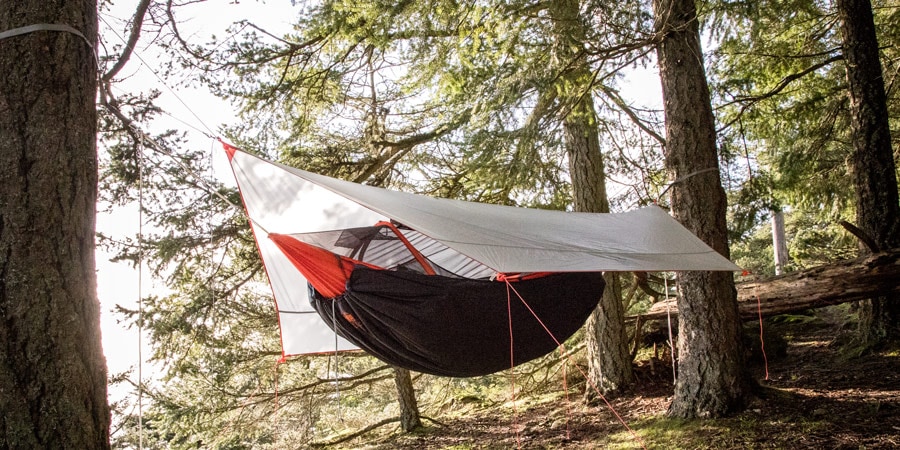
You can set up hammock tents almost anywhere you can find a pair of trees to hang them, so the desert or high alpine environments are out.
- They're versatile because you don't have to worry about finding flat ground.
- Because they don't require staking and hang off the ground, hammocks are minimum-impact shelters.
- You can add a rain fly, mosquito netting and an underquilt for warmth; keep in mind that those things add to the overall weight and cost.
- Hanging and sleeping in a hammock takes some time to get right and isn't for everyone.
Read more on How to Hammock Camp.
Bivy Sacks
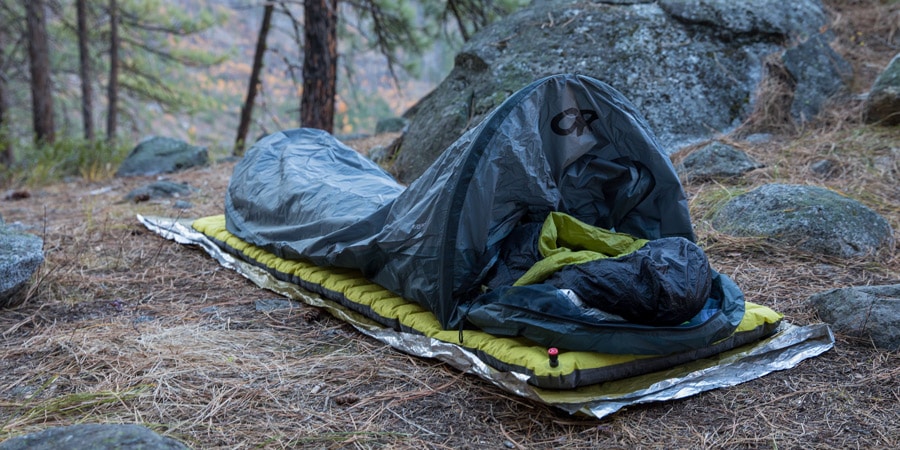
Bivy sacks, short for bivouc sack, are waterproof, breathable enclosures that typically fit just your sleeping bag and a pad.
- They're compact, lightweight and take up the least amount of ground space so you can camp in more places using them.
- It won't keep your gear dry and there's no room for gear storage.
- Most have durable bottoms to protect your bag and prevent moisture from the ground from seeping up.
- You're more exposed to the elements and critters, and there's not much you can do in them other than lay down, so waiting out a storm may not be fun.
Read more in this article on How to Choose Bivy Sacks.
Decide on Your Ultralight Sleep System
Find the lightest possible sleeping bag and sleeping pad for your conditions, budget and personal comfort level. Even the most die-hard minimalist backpackers opt to add ounces in this category if a good night's sleep is most important to them.
Ultralight Sleeping Pads
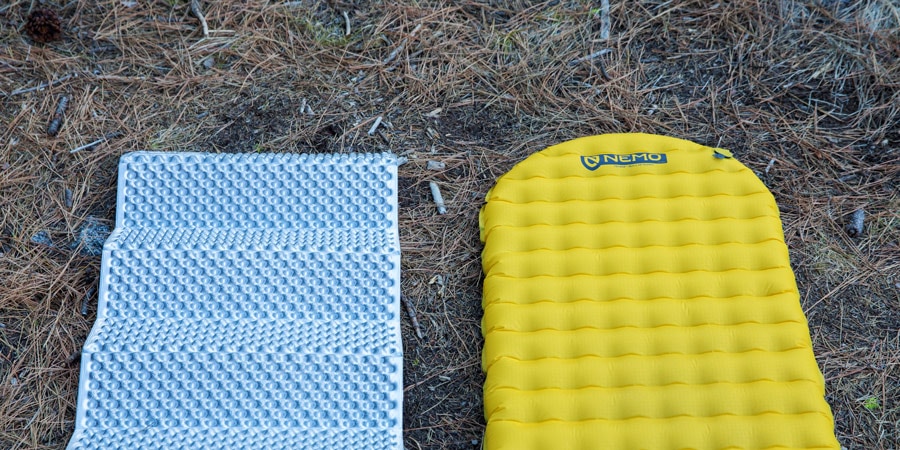
Closed foam cell pads are the cheapest, most durable option. They're lightweight, easy to replace and won't deflate—but they're not the most comfortable. Because they're so durable, they're the preferred choice for many thru-hikers who don't want to risk popping or puncturing a pad. They also do double-duty as a seat cushion. The downside is that they're bulky.
Air pads: Increasingly lighter air pads have replaced self-inflating pads as the go-to choice for minimalist backpackers who want a comfortable pad that's also very compact. Air pads increase in price the more compact and lighter they are. They can be punctured, so it's a good idea to carry a small repair kit. Some make loud crinkly sounds when you move on them, which can be annoying.
Tips:
- Get a shorter length sleeping pad and use your backpack under your feet to get them off the ground.
- Unless you're camping for long stretches in snow or very cold conditions, choose a three-season pad and get a warmer sleeping bag. Or add a foam pad underneath your air pad to increase warmth.
Read more on How to Choose Sleeping Pads.
Sleeping Bag vs. Quilt
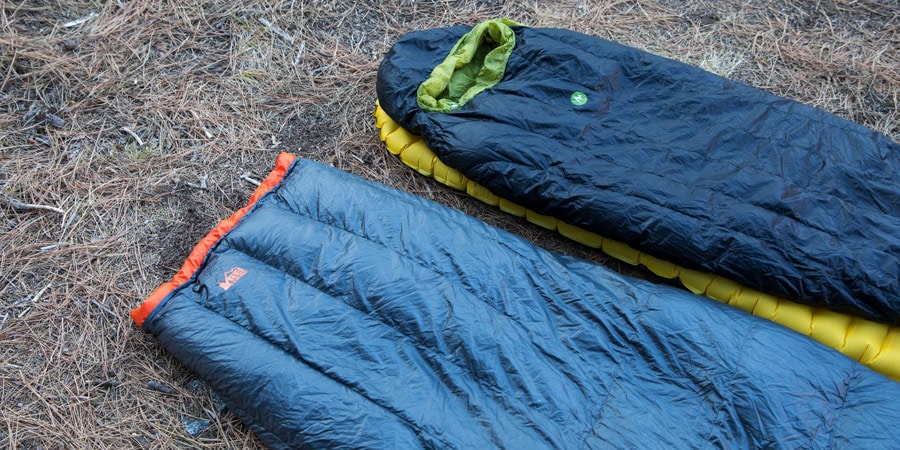
Whether you opt for a traditional mummy sleeping bag or quilt, aim for one that weighs less than 2 pounds.
Mummy bags have a slim cut and a contoured hood that cinches around your head to boost warmth.
- Down fill is the way to go if you're looking to shed weight, and down packs down much smaller than synthetic fill.
- Mummy bags are simple to use and enclose you in a protected cocoon.
- Some sleepers don't like the feeling of being constricted or tossing and turning in a narrow space.
Read more on How to Choose a Sleeping Bag.
Sleeping quilts are popular alternatives to sleeping bags for minimalists. Some quilts are simple blankets; others have a permanent foot box that encloses your feet or lower legs.
- Quilts are designed to be used on top of a sleeping pad, which you can secure into place with straps or cords to keep you centered over it.
- They weigh a lot less because they eliminate the hood, bottom insulation (there's no material beneath you) and zippers which are standard in most sleeping bags.
- Because there's no layer underneath you, some people complain about draft when they roll over.
- Quilts are lighter, more affordable and pack down more compared to mummy bags of similar quality and weight.
- Some people love them because there's more room to toss and turn and sleep on your side, and they aren't as confining as a mummy bag.
Tip: Wear your clothes to bed, including a down jacket, to boost the warmth.
Decide on Your Ultralight Backpack
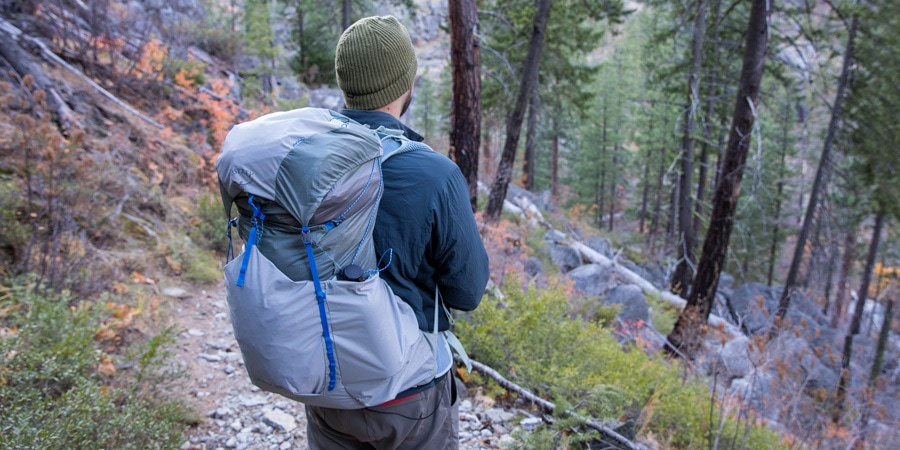
Of the big three backpacking items, your pack should be the last thing you consider. You'll want to lighten your shelter and sleep system before deciding what pack you'll use to carry all that gear. If you have lighter, more compact items, you can probably get away with a pack that's smaller and less structured. They're also made of lightweight, thinner materials such as cuben fiber or ripstop nylon and may be not be as durable as traditional backpacks, so you'll need to handle them with more care.
There are a lot of considerations that go into choosing an ultralight backpack. Perhaps the most important is that it fits you correctly and is comfortable. There's a wide range of ultralight backpacks produced by mainstream and cottage-industry manufacturers. It's a good idea to try them out first if you can. Borrow one from an ultralight backpacker and test it out. Load it up, walk around in it, make sure it's comfortable and fits you well. For more about fitting a pack, read this article on How to Size and Fit a Backpack or this infographic .
What size and capacity do I need? Aim for a pack that weighs under 2 pounds. The volume of the pack, of course, will depend on how many nights you plan to be out and the gear you have. Typical ranges may be from 30 to 60 liters. Food, water and other equipment such as bear-resistant food containers will increase the volume of the pack you'll need. For instance, if you're hiking trails (such as portions of the Pacific Crest Trail) where bear canisters are required, you'll need a larger pack than if you're doing a three-day trip with no bear cans.
How much support do you need? The lightest packs generally have simple or minimal internal frames, or no frames at all. Some rely on a foam back pad to give the pack shape, or have a slot on the back panel where you can insert a sleeping pad for extra support and cushion. On some packs you can remove the internal frames (two poles or a plastic sheet) to strip the pack down even further. For those wanting more comfort, look for a "tension-mesh suspension"—this is where the frame-supported pack sits a few inches off your back instead of resting directly against it, giving you more ventilation. Minimal shoulder straps or hip belts are a good way to go for those who don't have issue with sore spots, but others may prefer extra cushion or padding in some areas. If you know you have problem spots (sore back or hips), keep that in mind as you decide where you can and can't sacrifice support for ounces.
What features do you want? Most ultralight backpacks in the under 2-pound range don't have the same bells and whistles of traditional backpacks. Many have a single main compartment, a roll-top closure and thinner straps or fewer pockets. You'll lose some of the built-in organization, such as a separate compartment for your sleeping bag or pockets on your hip belt, and other luxuries.
Cook Systems (Fuel, Stove, Cookware)
To stay light, you can opt to not cook any meals or plan to simply boil water to add to dehydrated food instead of cooking a meal from scratch at camp. This saves weight both on the food and the fuel.
Cold soak (stoveless): There are some minimalists who will ditch the stove and hot meals altogether, opting instead for food that doesn't require cooking. Cold soaking is when you add cold water to dehydrated food and let it rehydrate over extra time. Some food such as lentils, beans, couscous, ramen noodles and oatmeal lend themselves better to cold soaking.
If cold soaking isn't your thing, here are popular ultralight backpacking stove options.
Tablet fuel stoves
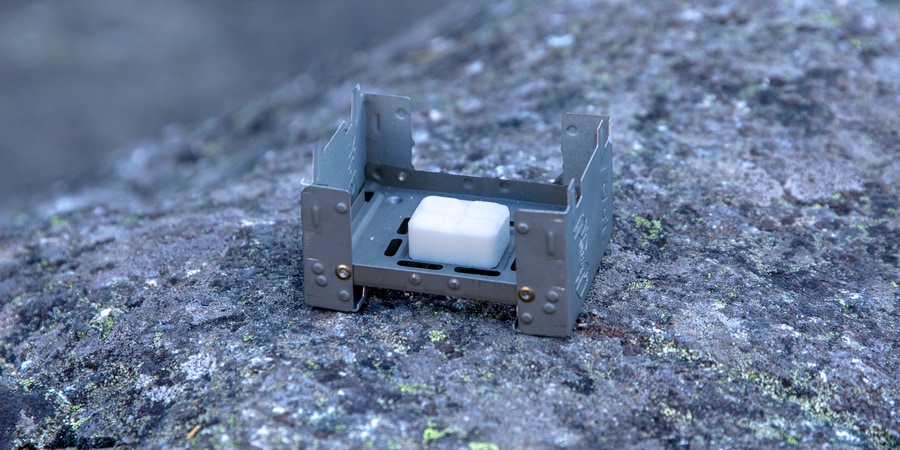
You can make the stove out of an aluminum can or buy one and bring a tablet of fuel per day—or per meal—as you figure out your needs. The fuel is light, it won't spill like liquid fuels and the flames are easier to put out than alcohol. But they can be hard to light and they don't burn very hot so it'll take a while to cook your food.
Alcohol stove
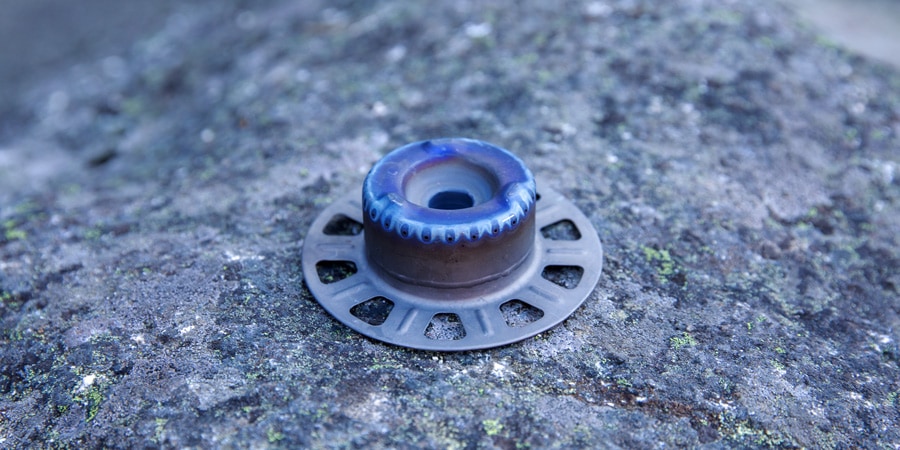
A favorite of thru-hikers, alcohol stoves are cheap, easy to make and weigh a mere ounce or two. An important note: Alcohol burns practically invisible in daylight. Be extremely cautious when using, and always use common sense when choosing a spot to cook (flat rocks are great). You find alcohol fuel in many locations, such as gas stations. It'll take longer to boil water than with a canister stove. Bring a bottle containing only as many fluid ounces of alcohol as you'll need for your trip (this often requires being very familiar with your gear). Make sure you store it in a leak-proof bottle. Also, check wildfire regulations where you're traveling to make sure they're allowed. Read How to Make an Alcohol Stove from Soda Cans.
Canister stove
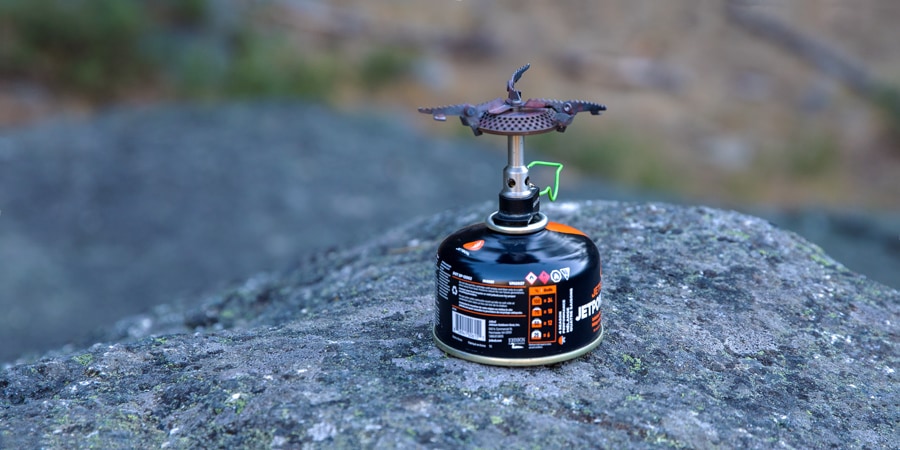
These tiny folding stoves may weigh only two to three ounces, but they screw onto isobutane canisters that weigh quite a bit and are heavy even when empty. You can't always find the fuel canisters everywhere and you can't ship them, but they are easy to use, convenient and boil water much faster than other stove options.
Integrated canister stove system
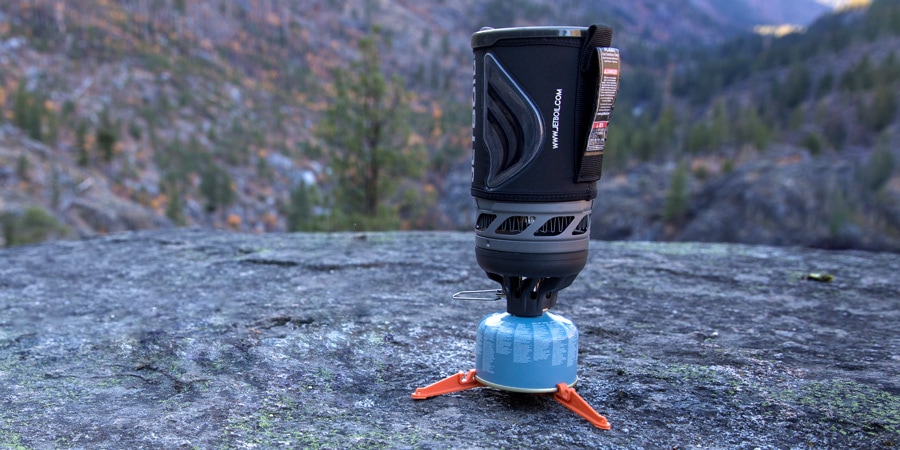
Some ultralight backpackers will bring an integrated canister stove, especially for two or more people. While heavier and bulkier, this system boils water very quickly so you may save weight by bringing less fuel. They're great choices for bad weather conditions.
Cook pot: The lightest cook pots are made of titanium, weigh mere ounces and heat fast. Many ultralight backpackers bring one pot that doubles as their bowl and cup, so a folding handle makes it convenient to hold. You can buy or make a cozy for the pot to conserve fuel and keep food hot.
Shop Ultralight Backpacking Stoves
